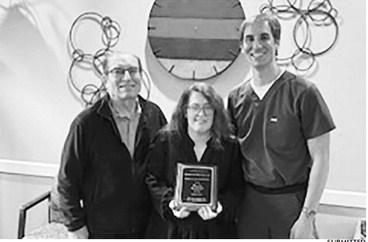County bracing for insurance rate increases, looks ahead to 2026 budget
Despite having an enviable claims ratio, the county’s insurance brokers are advising board members to plan for a rate increase in the coming year’s budget.
Claim ratios are the comparison between what is paid in premiums and what the insurance provider has to pay out in claims. This measurement of usage is a major factor used in determining premium rates and increases.
At the July 18 joint meeting with the county’s finance and personnel committees, consultant Geoff Verges of USI advised the county that the usage ratio was at about 70%. “That is a very good loss ratio have,” he said.
However, he noted that number did not contain the complete picture because the county’s insurance provider has a pooling limit of $150,000 and there were a growing number of members of the county’s insurance group who exceeded that high cost pooling limit. He noted this could be seen as a greater risk going forward for the county.
In the past two years, the county has had zero percent increases in health insurance premiums through the WCA Group Health Trust, due in large part to the low usage ratio. Verges cautioned the committee to expect an increase from 5 to 7%, noting that their projections tend to be very conservative. He said WCA had committed to giving a renewal amount by August 16.
“They are eager to retain your business,” Verges said. County board chairman Jim Metz serves on the board for the WCA Group Health Trust and said they have worked well with the county.
It was noted that while it is easy to leave WCA Group Health Trust, it can be more difficult to get back into the group health trust without having to pay more.
He said feedback from employees included interest in having a qualified high deductible options which would allow the employees to set up health savings accounts. He advised that there be at least a 10% spread in premium price between the the high cost high deductible plan option and the lower cost one suggested that the county should fund the plan based on the average.
“There are ways to model this to give them the benefit they want, at a budget that appeals to you,” he said.
Committee member Lynn Rosemeyer asked about the potential for looking at self insurance as a way to reduce insurance expenses. Verges said that since the county is already part of a self-funded trust, some of the savings incentives that could be seen by private employers is not there for the county.
He said in order to make a selfinsurance plan work, they would have to build a claim reserve of about $2,578,000 to have on hand for any claims that would come in. He said in the first few months, the county would be very happy with the savings, however, after the claims lag caught up, there would be costs going out to above the average claims level.
He said cash flow is a major consideration. While the county would have a stop loss of $200,000 for when secondary insurance kicks in, that would be for each employee. If all 130 of the people on the county’s plan reached that level in a given month, the county would be in trouble.
Verges noted that he is a believer in self-insurance and that it can work, but that there are cautions with it.
Committee members approved setting a 5% increase in the 2026 county budget for the health insurance premiums. While this can change, it will give a starting point when preparing the departmental budgets.
In other business committee members:
• Approved switching to Unum Insurance of Minnesota for the voluntary benefit plans. These are employee-funded plans for voluntary life insurance, short term disability, accident and critical illness coverage. At the prompting of an employee work group, Verges looked at options available from providers and recommended Unum for its ability to offer similar plans to current plans, but at a savings to employees. In addition the committee approved switching to New Jersey-based NVA for a voluntary vision coverage, Verges noted that previously only four county employees were taking the benefit through AFLAC with most employees saying they were unaware that it was an offered benefit. Verges said they will be working with Unum and NVA to have people come to the county to help enroll county employees in the programs and answer questions. He noted a major concern is ensuring that employees get the coverage they need while not overdoing it. “We don’t want them to become insurance rich and payroll broke,” Verges said.
• Approved the job description and wage scale recommendation for a jail administrator position. Sheriff Corey Dassow explained he expected this to to be filled from within the department and eliminate the need for the jail corporal position. The intent is by having an administrator, that individual would be the single point of contact for running the jail and free up the jail sergeants to provide more supervision to jail staff especially on the overnight shift. The position will be classified at grade “M” which has an hourly rate of $35.13. This is about $12,600 per year more than the jail corporal position.
“How are we funding this for the remainder of 2025?” asked committee member Mike Bub.
“I don’t have an answer for that,” Dassow said. What may happen is that the sheriff’s department would end the year overbudget.
• Approved increasing the authorization for the County Veterans Service Office (CVSO) staff to work 40 hours per week rather than 35 hours per week. Federal budget action has increased the amount of grant funding available to pay for CVSO staff and this is expected to cover the additional wages. The increase was needed due to growing workloads in the department which assists veterans in getting earned benefits. Bub praised the amount of work being done by the office staff. “This is basically a no-brainer,” he said.


